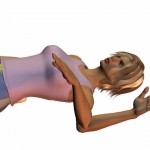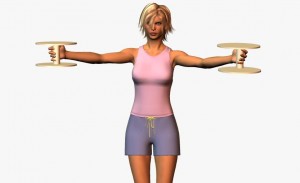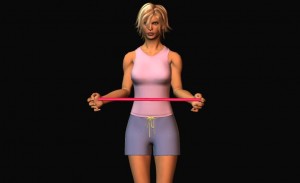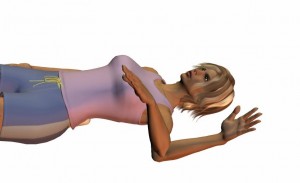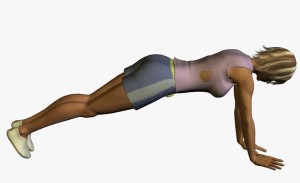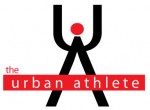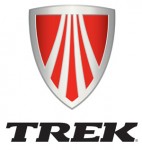Audience: Primarily my Patients in Toronto but other Physiotherapists, ATs, Chiropractors and Strength and Conditioning Pros may like this
Purpose: Review the literature for safe and effective exercises for shoulder rehabilitation of the Rotator Cuff - primarily for the treatment of the finding of shoulder impingement
Sources: Initially, this was going to be a larger review. However, I have just focused on the main points from the work of Mike Reinold who published a great review in JOSPT (2008), Mike can be read at (www.mikereinold.com). A recent review by Rafael Escamilla (Sports Medicine 2009) is also an excellent resource.
In a previous post (http://thebodymechanic.ca/2011/01/18/shoulder-impingement-rehabilitation-part-one/), I briefly touched on some components of shoulder rehabilitation. In this post I wanted to provide more specific examples of shoulder exercises for the rotator cuff and give a clinical and biomechanical rationale for these exercises.
Every patient is different and many clinicians will stress that they don’t like a “cookbook” or recipe for every shoulder. While this has some validity I believe that there are certainly some fundamental exercises that the vast majority of people can benefit from. If you are safely working the entire shoulder girdle, not developing muscular imbalances, not putting the tissues at a greater risk for injury then I think it is difficult to argue that this is bad thing. Yes, tweaking a program should occur, the program should be stage specific for rehab BUT the following exercises are staples and are certainly a good start. If you are therapist, don’t feel you have to reinvent the wheel to get good results. Adding neuromuscular stabilization drills (both loading bearing and with a therapist), core stability/integration and progressing to exercises that more closely mimic the patients pre-injury physical demands is obviously appropriate.
Principles of Exercise Selection
1. Don’t jam the arm bone into the shoulder blade. Let’s choose exercises that help keep the humeral head centred.
2. Train the rotator cuff musculature - notice I did not say strengthen specifically. While this may occur I don’t think that the rotator cuff need to necessarily be weak for us to train them. There can be other benefits to resistance training that are not predicated upon the existence and correction of weakness.
2. Choose exercises that minimize deltoid activity and maximize rotator cuff activity.
3. Work the entire body
4. Attempt to minimize upper trapezius muscle activity - I recognize that this might be debatable depending on the presentation of the patient. Paula Ludewig (Manual Therapy 2011) suggests that and an individual with poor clavicular retraction may benefit from exercises targeting the upper traps.
The Basic Exercises
Supraspinatus - Full Can Exercise in the Scapular Plane
This exercise is basically an arm raise with the thumb pointing upwards. For years it was advocated to have the thumb pointing downwards (i.e. internally rotate your shoulder) and then raise your arm. This arm raising should be done not straight to the front nor straight out to the sides. Rather the arms should be in the middle of these extremes (i.e. the scapular plane)
You don’t need to internally rotate (i.e. turn your thumb down) to work your supraspinatus. Performing the empty can in the scapular plane recruits the Supraspinatus to >60% of its maximum whilst minimizing deltoid muscle activity. Minimizing the deltoid is important because the deltoid imparts a superior shear force - it can cause the humeral head to slide upwards and that is what we want to avoid. We want to work the supraspinatus because this muscle helps centre the head of the humerus.
The problem with the empty can (e.g. thumb down) exercise:
-increased risk of greater tuberosity abutting the shoulder blade
-increased deltoid activity increasing superior shear forces
-Internal rotation decrease the supraspinatus’ mechanical advantage
-increased shoulder blade winging and anterior tilt (decreasing the size of the subacromial space and increasing impingement possibility)
Training the Infraspinatus and Teres Minor
These muscles are external rotators of the humerus and work to compress the humeral head in its socket. The infraspinatus also has a abduction moment at lower degrees of arm elevation. The infraspinatus has the ability to produce more than 6 times the amount of force than the Teres Minor. The infraspinatus is strongest in Neutral and produces less force with shoulder abduction whereas the Teres Minor may be unaffected by shoulder abduction.
However, performing shoulder external rotation with a greater degrees of arm elevation increases the muscle activity of the supraspinatus and deltoid musculature and decreases the muscle activity from the posterior rotator cuff.
In a fantastic review for shoulder muscle function (Reinold et al 2009) suggest that external rotation in side lying should be considered in all exercise programs attempting to stress the posterior rotator cuff. Muscle activity exceeds 60%, contribution from the deltoid and supraspinatus are minimized and less strain is placed on the anterior capsule and labrum when compared to external rotation with arm elevated to 90 degrees. I love external rotation with abduction, it appears more functional but it may not always be prudent. Besides, there is still a strength and function carry over when training in neutral abduction to performing in abduction. Specificity is not so inelastic.
…and now for the most common exercise ever, which I have avoided for years because I thought I was better than it.
Standing external rotation with tubing
This simple and ubiquitous exercises is excellent at training the posterior rotator cuff safely and effectively. Ideally, you have a towel between your elbow and your side and you pull rubber tubing apart in front of you. So simple but good. Adding the towel helps to create better form and can increase muscle activity 20-25%.
Subscapularis Strengthening
The subscapularis works to internal rotate the arm (e.g. like a throwing motion) but also compresses the humeral head in the socket to provide dynamic stability with the posterior rotator cuff.
Strengthen the subscapularis at 90 degrees of abduction to minimize muscle activity from other movers (e.g. pectoralis major). Or, you can strengthen the subscapularis while performing other exercises. The subscapularis also works when performing the push up plus exercise - a greater exercise for the Serratus Anterior (see blog here on the Serratus Anterior ). You can obviously add weight to the hand as is NOT seen in the picture below… always attempt to keep the trapezius silent (i.e. don’t shrug)
Take home points
The rotator cuff can be trained in a number of different ways. By no means are the above exercises exhaustive. The preceding exercises are chosen because of their simplicity, their safety and the high levels of the activity that they produce.
The exercises are good at targeting the desired muscle without getting a lot of activity from other muscles that want to help out.
Part three of this post will look at the scapulothoracic muscles and their importance in providing optimal shoulder blade control.
All the best,
Greg Lehman
Toronto Physiotherapy at the Urban Athlete

